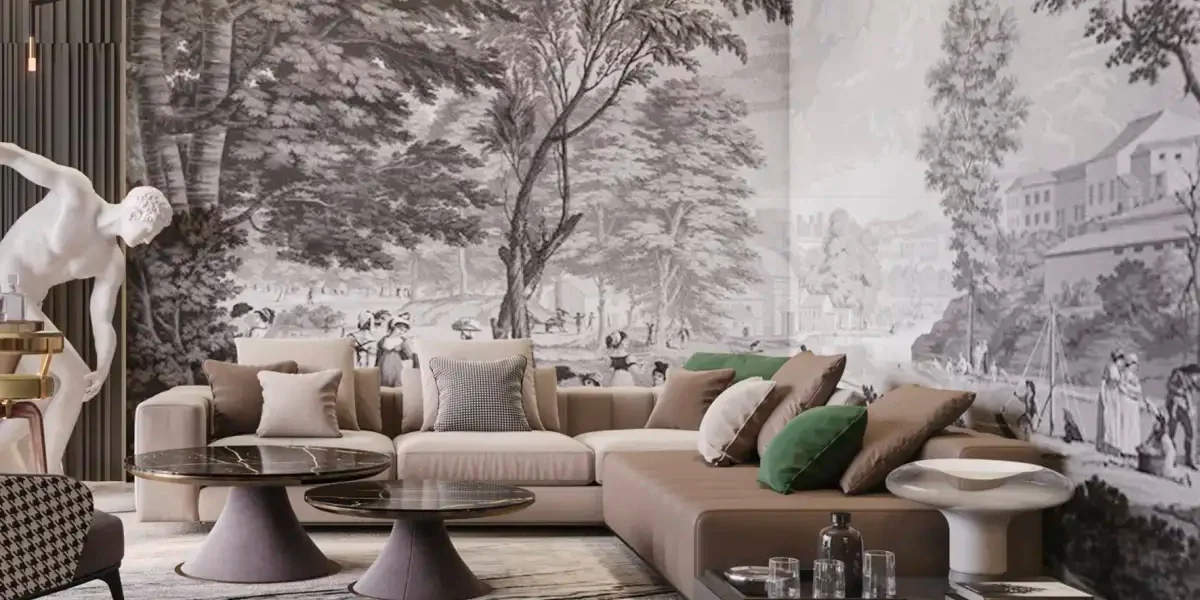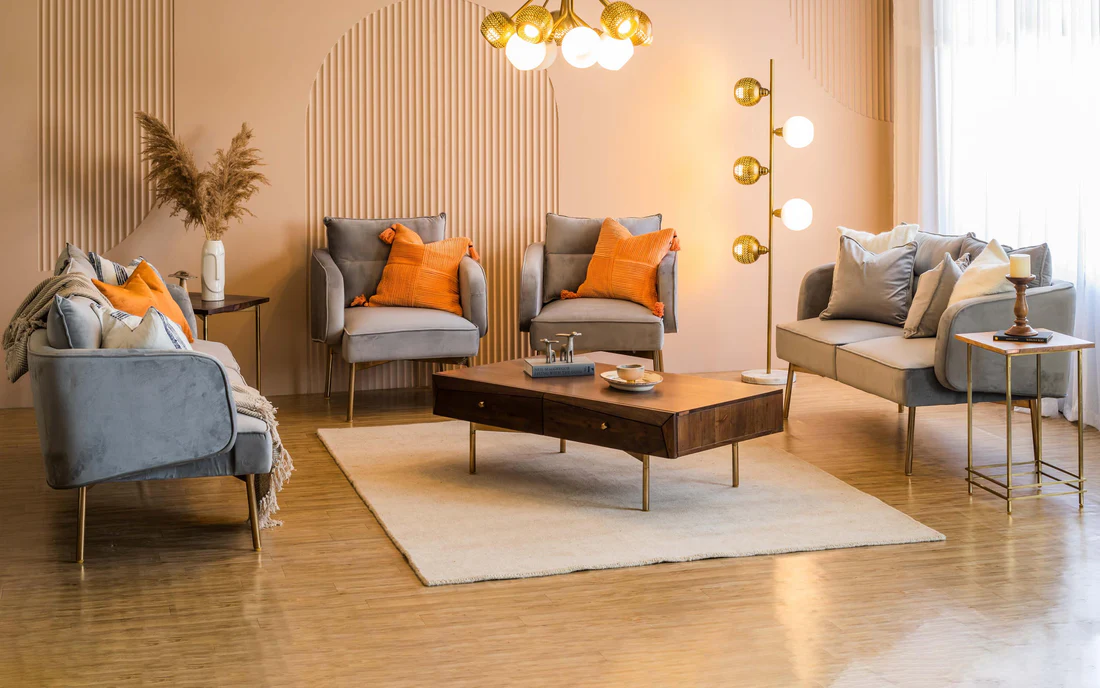Home improvement isn’t just about renovating spaces or adding new furniture—it’s about creating an environment that resonates with who you are and enhances the way you feel in your own home. Whether you’re working with a small room or transforming an entire house, two key elements will guide the process: theme and style. While these terms are often used interchangeably, they serve distinct purposes in design, and when combined thoughtfully, they can elevate your home into a harmonious, personalized haven.
In this article, we will explore how to use theme and style to improve your home, from selecting a concept that speaks to your needs and aesthetic preferences to executing it in a way that enhances comfort, function, and beauty.
Understanding Theme and Style
Before diving into how to use theme and style to enhance your home, it’s important to understand what these terms mean within the context of interior design.
-
Theme: A theme is the overall concept or idea that governs the design of your space. It is usually inspired by a specific mood, period, or cultural reference and provides the foundational direction for your design choices. Whether it’s inspired by a historical era, a natural environment, or a specific function, a theme acts as a cohesive thread that connects various elements in your space. Themes are intentional and often visible in every part of the room—furniture, colors, textures, and decor all reflect a consistent motif.
-
Style: While a theme represents a broad idea or concept, style refers to the specific manner or approach in which you execute that idea. It encompasses the design choices that reflect particular cultural movements or preferences. Style can be minimalist, modern, bohemian, or classic, and it is often more flexible than theme, allowing you to mix different influences to create a unique space. Style is essentially the personality of the space, while the theme is the story that unites it.
The Role of Theme in Home Improvement
A theme provides clarity and focus, making it an essential starting point for any home improvement project. It guides your decisions on color palettes, furniture types, wall treatments, and even decorative accents. By establishing a central theme, you ensure that your design elements align with your desired aesthetic and the mood you want to create.
Choosing a Theme for Your Home
The first step in using theme to improve your home is identifying a concept that resonates with you. Here are a few popular theme ideas to get you started:
-
Nature-Inspired Themes: For those who appreciate the outdoors, a nature-inspired theme can create a calming and refreshing atmosphere. Think earthy tones, natural materials like wood and stone, and decor that incorporates plants, seashells, or other natural elements. A woodland theme might feature deep greens, rich browns, and tactile textures, while a coastal theme could bring in light blues, whites, and airy, nautical accents.
-
Vintage or Retro Themes: Vintage or retro themes draw inspiration from the past, whether it’s the bold colors and geometric shapes of mid-century modernism or the opulence and sophistication of the Art Deco era. If you love history, a vintage theme allows you to blend old-world charm with contemporary comfort. Choose period-specific furniture, lighting, and color schemes to evoke a nostalgic, timeless ambiance.
-
Industrial or Urban Themes: Inspired by the rugged charm of lofts and warehouses, industrial themes feature raw materials like metal, brick, and concrete. The exposed structure of a room plays a significant role in this theme, with minimalist decor highlighting the architectural features of the space. Neutral tones—grays, blacks, and whites—dominate, often punctuated with bold accents such as bright lighting fixtures or vibrant artwork.
-
Bohemian (Boho) Themes: For a laid-back and eclectic vibe, a bohemian theme allows for freedom and creativity in design. It is characterized by an abundance of texture, color, and pattern, with a focus on handmade or vintage items. Think vibrant rugs, layered textiles, hanging plants, and unique, global-inspired furniture. The boho theme encourages mixing and matching, creating a cozy, lived-in atmosphere.
Once you have chosen a theme, think about how it will shape the design choices throughout your home. The beauty of a theme is its ability to unify disparate elements, making even the most eclectic pieces feel intentional and cohesive.
The Role of Style in Home Improvement
Style is where your personal touch truly comes into play. While a theme provides the underlying framework, your style determines how you execute it. It gives your home its distinct personality and ensures that your space feels uniquely yours. Style is much more fluid than theme and can often combine elements from different periods or cultures.
How to Select and Implement Style
-
Define Your Personal Style:
Think about the types of interiors that resonate with you. Are you drawn to clean, minimalist spaces that emphasize simplicity, or do you gravitate toward more ornate, traditional designs? Identifying your personal style can help inform both your theme and how you execute it. For example, if you love the industrial theme but prefer soft, feminine touches, you might incorporate plush textiles and pastel colors into the raw, metal-heavy design. -
Balance Function and Aesthetics:
While style often focuses on visual appeal, it’s crucial not to neglect function. Your home should not only look good but also serve your everyday needs. For instance, if you’re creating a minimalist style, consider storage solutions that are sleek yet practical. The right style will improve the flow and usability of the space while still keeping the look aesthetically pleasing. -
Mix and Match Styles:
One of the great benefits of style is that you can mix different elements to create something entirely new. Feel free to experiment by combining elements from various design periods or influences. For instance, pairing mid-century modern furniture with rustic farmhouse elements or blending Scandinavian minimalism with tropical accents can create a dynamic, inviting space that feels both contemporary and unique. -
Consider the Architecture of Your Space:
Your home’s architecture will heavily influence the style choices that work best. A historic house with intricate moldings and high ceilings may call for a more traditional or classic style, while a modern apartment might lend itself well to sleek, contemporary furnishings. Be sure to take the architectural features of your home into account, using style to enhance and complement its inherent qualities.
Bringing Theme and Style Together
While theme and style may seem like separate entities, they work best when combined thoughtfully. A successful design balances both, ensuring that the central theme serves as a guide while your personal style adds nuance and character.
How to Blend Theme and Style
-
Use Theme to Guide Your Palette:
The theme you choose will often influence the colors you use throughout your space. For example, a coastal theme may favor soft blues, sandy beiges, and whites, while a vintage theme might include muted tones or rich jewel colors. Within these guidelines, your style can express itself through accents like throw pillows, art, or lighting choices. -
Incorporate Your Style in the Details:
While the theme provides the broad strokes of your design, style shines through in the details. Choose decor pieces, furniture, and accessories that reflect your personal preferences. If you love vintage elements, add antique furniture pieces or retro-inspired light fixtures. If you’re drawn to boho style, include eclectic throws, unique rugs, or decorative baskets. -
Consider the Flow of Your Home:
The best home designs flow seamlessly from one room to the next, with each area feeling connected. When working with both a theme and a style, pay attention to how the design choices in one room relate to the next. For example, you might choose a neutral color palette for your living room in an industrial theme but introduce a splash of vibrant color in the bedroom to reflect your bohemian style.
Conclusion
Improving your home with theme and style is a transformative process that allows you to create a space that feels both cohesive and uniquely yours. A theme provides a solid foundation, guiding your design choices, while your personal style adds the flair and individuality that make the space feel authentic. By thoughtfully blending these two elements, you can create a home that reflects your personality, serves your needs, and offers an inviting atmosphere for all who enter. Whether you’re undertaking a major renovation or simply refreshing a room, focusing on both theme and style will ensure that your home becomes a true reflection of who you are and the lifestyle you aspire to live.









